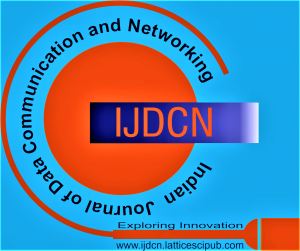![]()
Utilizing 64-QAM for Enhanced Data Transmission in Underwater Optical Communication System
Zinah A. Al-Mashhadani
Zinah A. Al-Mashhadani, Department of Information and Communication, Al-Khwarizmi College of Engineering, University of Baghdad, Iraq.
Manuscript received on 07 December 2024 | First Revised Manuscript received on 20 December 2024 | Second Revised Manuscript received on 25 January 2025 | Manuscript Accepted on 15 February 2025 | Manuscript published on 28 February 2025 | PP: 1-4 | Volume-5 Issue-2 February 2025 | Retrieval Number: 100.1/ijdcn.B504005020225 | DOI: 10.54105/ijdcn.B5040.05020225
Open Access | Ethics and Policies | Cite | Zenodo | OJS | Indexing and Abstracting
© The Authors. Published by Lattice Science Publication (LSP). This is an open access article under the CC-BY-NC-ND license (http://creativecommons.org/licenses/by-nc-nd/4.0/)
Abstract: Underwater acoustic channels are affecting by many factors like time varying multipath propagation, Doppler spread, and salinity, which can greatly limit the quality of data rate and transmission distance. Underwater optical communication represents a crucial technology that supporting higher data rate, secure links and low latency. In his paper the use of 64- Quadrature Amplitude Modulation (64-QAM) in underwater optical communication systems is investigated. The system is designed to offer higher data rate than those of acoustic communication system. The proposed design achieve data rate of 10 Gbps over a challenging transmission distance of 50 km. In our study, a simulation technique is used to evaluate the performance of the proposed design in the underwater conditions, focusing on factors such as Bit Error Rate (BER), constellation diagram and Quality factor (Q-factor). The achieved BER is of about 10-10 with a minimum signal to noise ratio (SNR) of about 30dB. This paper provides valuable results for the design of next-generation underwater communication systems for applications such as pollution monitoring, oil control and oceanography research.
Keywords: Optical Communication, BER, SNR, Simulation Technique.
Scope of the Article: Information-Centric Networking
